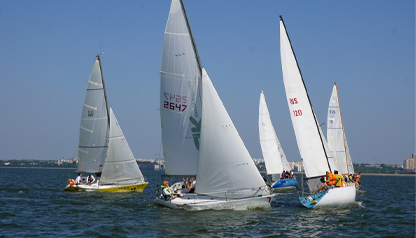A Comprehensive Guide to Different Types of Stitching Needles and Their Uses in Sewing Projects
Understanding Stitching Needle Types A Comprehensive Guide
In the world of sewing and textiles, the choice of needle can significantly impact the quality of your work. Stitching needles come in various types, each tailored to specific fabrics and projects. Knowing about these needle types can help you achieve professional results, whether you're a novice or an experienced sewist.
1. Universal Needles
Universal needles are versatile and suitable for most woven and knit fabrics. They have a slightly rounded point, allowing them to penetrate various materials without causing damage. These needles are ideal for general sewing tasks, making them a great starting point for beginners. If you're unsure which needle to use, a universal needle is often a safe choice.
2. Ballpoint Needles
Ballpoint needles are specifically designed for knit fabrics. Unlike universal needles, they feature a rounded tip that slides between the fibers of the fabric rather than piercing them. This design helps prevent skipped stitches or damage to the fabric, making ballpoint needles the go-to option for sewing stretchy materials like jersey or lycra. If you're working on t-shirts or leggings, don't forget to reach for a ballpoint needle.
3. Sharp Needles
As the name suggests, sharp needles have a slender, acute point that allows them to penetrate thicker fabrics and tightly woven materials easily. They are excellent for sewing fabrics like denim, leather, or canvas. If your project involves heavy-duty materials, using a sharp needle ensures cleaner stitches and fewer fabric snags.
stitching needle types

Quilting needles come with a tapered point specifically designed for quilting tasks. The tapered tip allows the needle to penetrate multiple layers of fabric without causing damage. Quilting needles help create even stitches when sewing quilts or layers of fabric together. If you're venturing into quilt-making, be sure to have quilting needles on hand.
5. Embroidery Needles
For projects that involve decorative stitching, embroidery needles are essential. These needles usually have a larger eye to accommodate thicker embroidery threads and often feature a special coating to reduce friction. This can be beneficial when working with intricate designs that require precision and care. If you are adding embellishments to your sewing projects, opt for embroidery needles to achieve the best results.
6. Leather Needles
Leather needles are specifically designed for sewing leather and suede. They have a unique wedge-shaped point that cuts through leather without tearing, allowing for clean and precise stitches. If you're crafting items like leather bags or garments, using leather needles will ensure the integrity of your material is maintained.
7. Specialty Needles
In addition to the common needle types, there are various specialty needles available for specific tasks. For example, double needles are used for creating decorative hems, while overlock or serger needles are designed for use on overlock sewing machines. Researching and purchasing specialty needles based on your sewing needs can elevate your crafting experience.
Conclusion
Choosing the right stitching needle is crucial for the success of your sewing projects. With many options available, it’s important to consider the type of fabric and the purpose of your project. By understanding the different types of needles, you can select the best one for your needs, leading to beautifully finished pieces and a more enjoyable sewing experience. Don't underestimate the power of the right needle; it can make all the difference in your crafting journey!
-
Industrial Cylinder Arm Sewing Machine: Revolutionizing Heavy-Duty SewingNewsJul.28,2025
-
Cylinder Arm Sewing Machine: Perfect for Special Sewing ApplicationsNewsJul.28,2025
-
Cylinder Bed Sewing Machine: Essential for Sewing Complex MaterialsNewsJul.28,2025
-
Heavy Duty Sewing Machine: The Essential Tool for Industrial ApplicationsNewsJul.28,2025
-
Computerized Pattern Sewing Machine: Revolutionizing Precision StitchingNewsJul.28,2025
-
Heavy Duty Industrial Sewing Machine: Power Meets PrecisionNewsJul.28,2025
-
Leather Sewing Machine: The Industrial Standard for Tough MaterialsNewsJul.18,2025





























